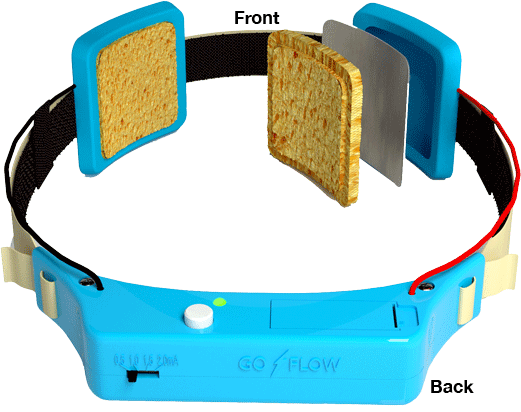Non-invasive electrical brain stimulation helps stroke victims
June 3, 2012
In a step towards improving rehabilitation for patients with walking impairments, researchers from the Kennedy Krieger Institute have found that non-invasive stimulation of the cerebellum helped healthy individuals learn a new walking pattern more rapidly.
The findings suggest that cerebellar transcranial direct current stimulation (tDCS) may be a valuable therapy tool to aid people relearning how to walk following a stroke or other brain injury.
In a study funded by the National Institutes of Health and the Johns Hopkins Brain Sciences Institute, Amy Bastian, PhD, PT, director of the Motion Analysis Laboratory at Kennedy Krieger Institute and colleagues explored the impact of stimulating the cerebellum on adaptive learning of a new walking pattern.
The team tested how anode (positive) and cathode (negative) electrodes affected this learning process. They placed the electrodes on the scalp over the cerebellum and applied very low levels of current, finding that the rate of walking adaptation could be increased or decreased. (The anode speeds up learning and the cathode slows it down.)
“It is important to demonstrate that we can make learning faster or slower, as it suggests that we are not merely interfering with brain function,” says Dr. Bastian. “Our findings also suggest that tDCS can be selectively used to assess and understand motor learning.”
The results from this study present an exciting opportunity to test cerebellar tDCS as a rehabilitation tool. Dr. Bastian says, “If anodal tDCS prompts faster learning, this may help reduce the amount of time needed for stroke patients to relearn to walk evenly. It may also be possible to use tDCS to help sustain gains made in therapy, so patients can retain and practice improved walking patterns for a longer period of time. We are currently testing these ideas in individuals who have had a stroke.”
Other therapeutic uses
Speech therapist and researcher Jenny Crinion of UCL Institute of Cognitive Neuroscience is using tDCS to treat speech deficits caused by strokes, while neuroscientist Roi Cohen Kadosh at the University of Oxford is using it to improve the way people handle numbers, The Guardian reported Saturday.
Medical technology firms such as Soterix and Magstim supply researchers with a tDCS kit; a DIY version is available for $99.
Ref.: Gowri Jayaram et al., Modulating locomotor adaptation with cerebellar stimulation, Journal of Neurophysiology, 2012, DOI: 10.1152/jn.00645.2011
